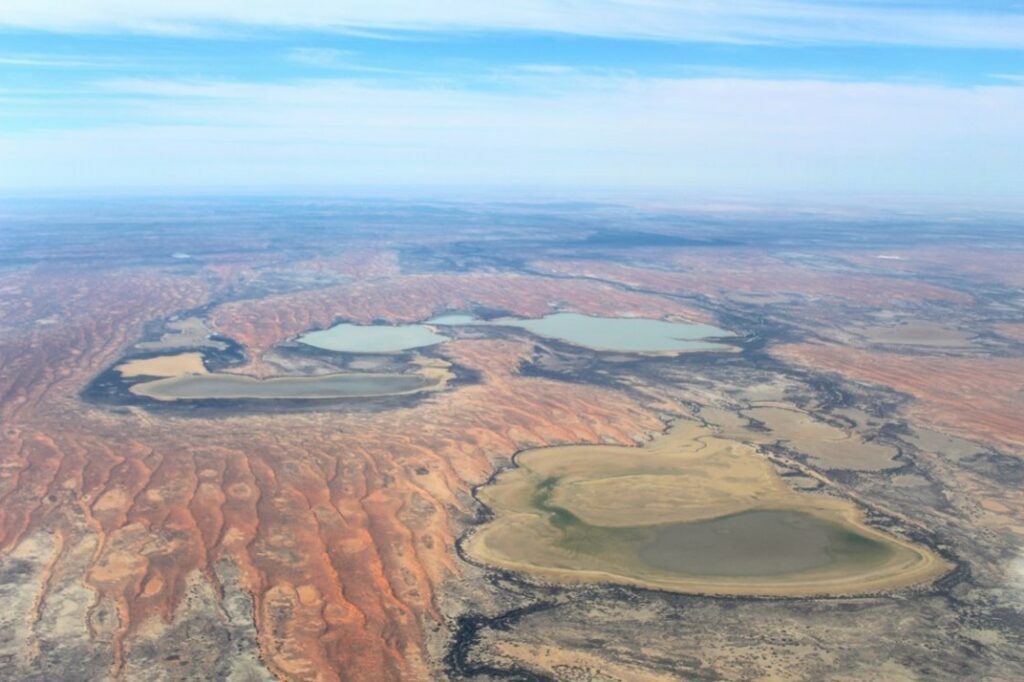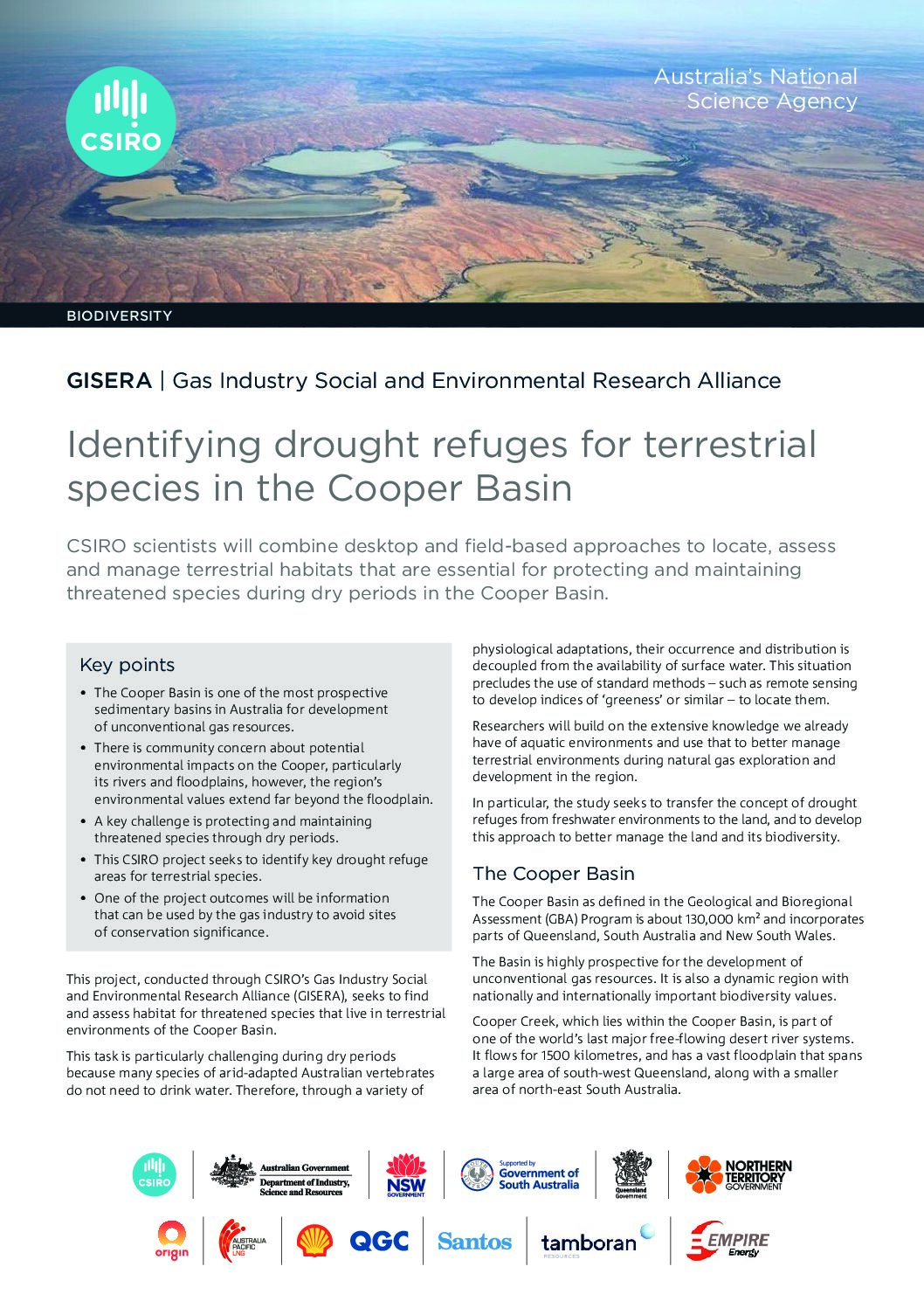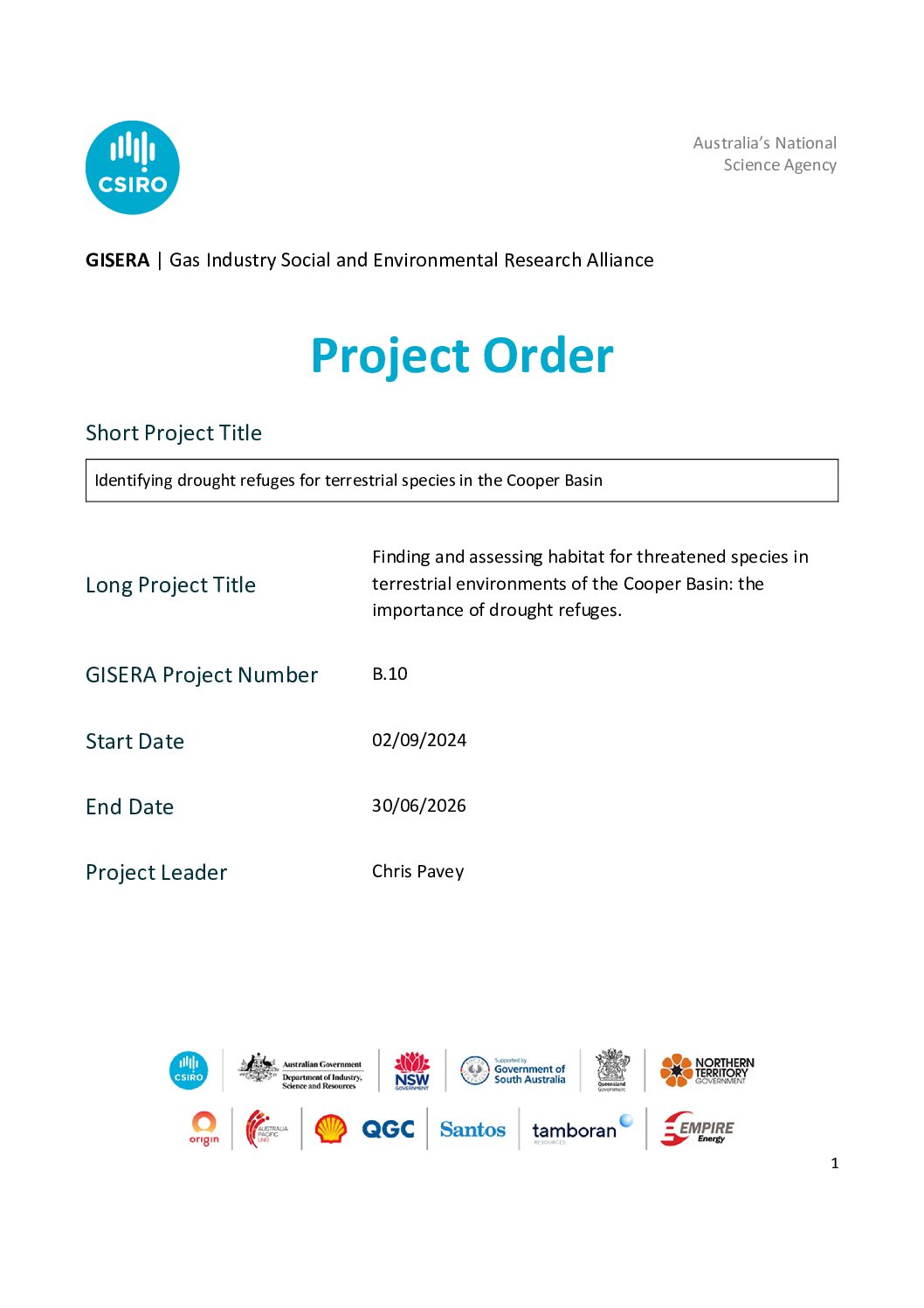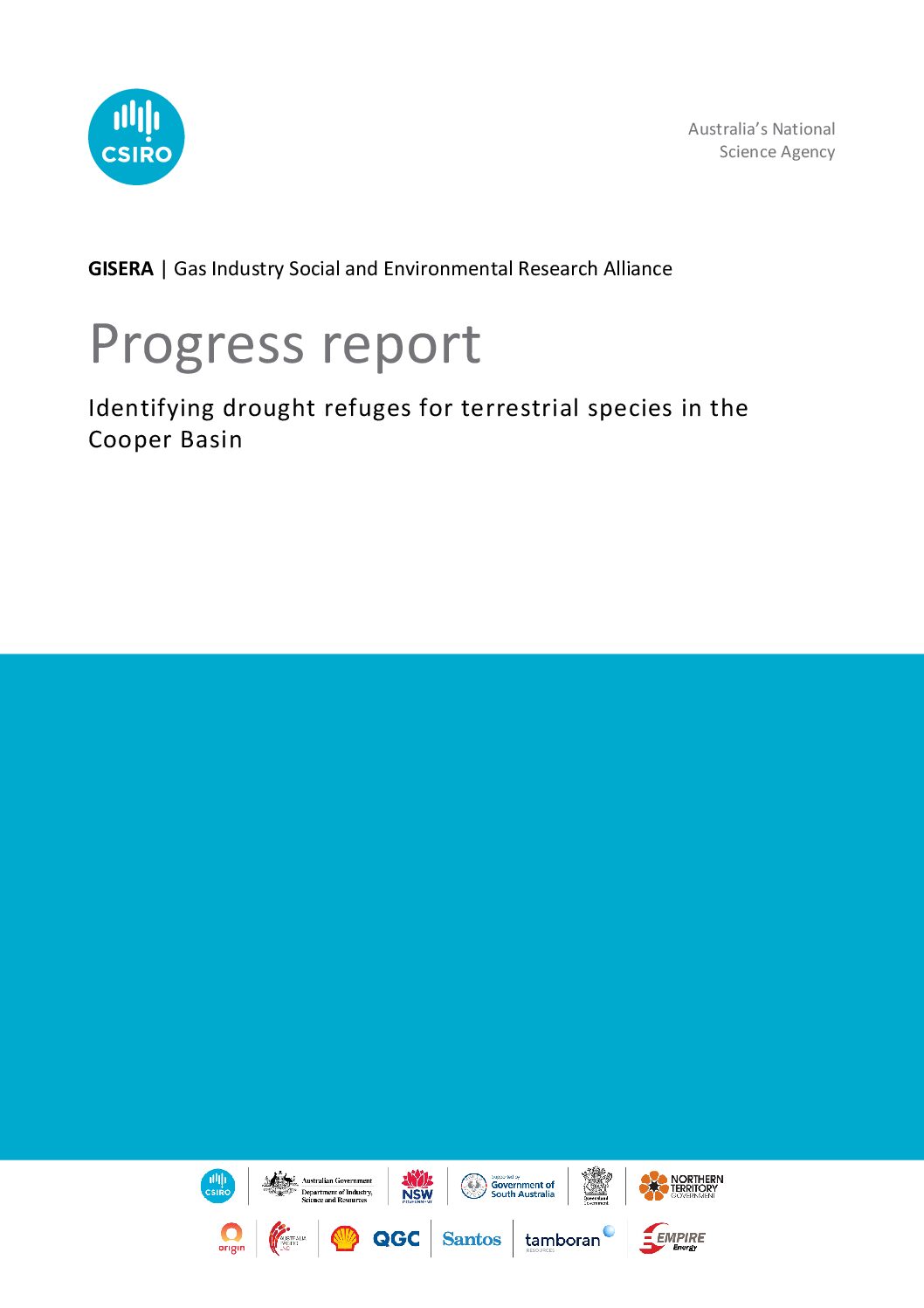Identifying drought refuges for terrestrial species in the Cooper Basin
Pastoralists, traditional owners, conservationists and the broader community all have a strong interest in ensuring the ongoing resilience of the Cooper Basin, particularly its free‐flowing rivers such as Cooper Creek. This concern is focused on potential impacts to the environment from onshore gas development.
The region, particularly its rivers and floodplains, supports important environmental values including a rich biodiversity and populations of threatened species. From an environmental perspective, the Cooper Basin is of national importance, and it is exceptional on a global scale. The Cooper Creek floodplain is massive with an area of approximately 15,300 km2 and has the most variable hydrological regime of any of the world’s large rivers of comparable discharge.
The aquatic systems of the Cooper Basin are inhabited by a tremendous diversity of plants and animals, contain important cultural and spiritual values for Indigenous communities, and support a significant organic beef industry that depends on native pastures.
The environment features dramatic changes in condition, described as boom‐bust, that is driven by pulses in water availability and thus primary productivity. Dramatic variation in rainfall and river flows in the region produce alternating phases of boom and bust that are not predictable over time.

Major components of the biodiversity of the Cooper Basin occur in terrestrial environments.
A key challenge in the Cooper Basin is to protect and maintain threatened species and their habitats for their continued survival and resilience through dry periods. This challenge is heightened by ongoing exploration and operation by the resource sector. Although areas of the Cooper Basin will be set aside from gas development, community concerns about protection of the natural environment remain.
This CSIRO research project seeks to apply knowledge from aquatic environments to better manage terrestrial environments during natural gas exploration and development in the Cooper Basin.
In particular, this project seeks to transfer the concept of drought refuges from freshwater environments to the land, and to develop this approach to better manage the land and its component biodiversity, particularly threatened and endemic species.
The project will combine desktop and field-based approaches to locate, assess the condition of, and manage habitat essential for ongoing persistence during the dry periods that dominate over time. The focal species will be a subset of those that are threatened or otherwise significant (endemic or near‐endemic) within the Cooper Basin.
Major components of the biodiversity of the Cooper Basin occur in terrestrial environments. By identifying these important refuge areas, the project will provide invaluable information that can be used by floodplain mangers, regulators and industry to help protect sites of conservation significance.



